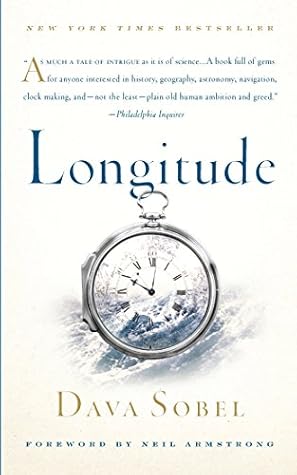More on this book
Community
Kindle Notes & Highlights
by
Dava Sobel
Read between
December 5 - December 9, 2022
Ptolemy himself had only an armchair appreciation of the wider world. A common misconception of his day held that anyone living below the Equator would melt into deformity from the horrible heat.
Likewise the Tropic of Cancer and the Tropic of Capricorn, two other famous parallels, assume their positions at the sun’s command. They mark the northern and southern boundaries of the sun’s apparent motion over the course of the year.
The zero-degree parallel of latitude is fixed by the laws of nature, while the zero-degree meridian of longitude shifts like the sands of time.
To learn one’s longitude at sea, one needs to know what time it is aboard ship and also the time at the home port or another place of known longitude—at that very same moment. The two clock times enable the navigator to convert the hour difference into a geographical separation. Since the Earth takes twenty-four hours to complete one full revolution of three hundred sixty degrees, one hour marks one twenty-fourth of a spin, or fifteen degrees.
Those same fifteen degrees of longitude also correspond to a distance traveled. At the Equator, where the girth of the Earth is greatest, fifteen degrees stretch fully one thousand miles. North or south of that line, however, the mileage value of each degree decreases. One degree of longitude equals four minutes of time the world over, but in terms of distance, one degree shrinks from sixty-eight miles at the Equator to virtually nothing at the poles.
“dead reckoning” to gauge their distance east or west of home port. The captain would throw a log overboard and observe how quickly the ship receded from this temporary guidepost. He noted the crude speedometer reading in his ship’s logbook, along with the direction of travel, which he took from the stars or a compass, and the length of time on a particular course, counted with a sandglass or a pocket watch. Factoring in the effects of ocean currents, fickle winds, and errors in judgment, he then determined his longitude.
The moon travels a distance roughly equal to its own width every hour.
Whether it flows as sand or turns on wheels within wheels, time escapes irretrievably, while we watch. Even when the bulbs of the hourglass shatter, when darkness withholds the shadow from the sundial, when the mainspring winds down so far that the clock hands hold still as death, time itself keeps on.
Timing the motion of the lamp by his own pulse, Galileo saw that the length of a pendulum determines its rate.
A pamphleteer who signed himself “R.B.” said of Mr. Whiston, the fireball proponent, “[I]f he has any such Thing as Brains, they are really crackt.”
In these late-night tests, the Harrisons’ clocks never erred more than a single second in a whole month. In comparison, the very finest quality watches being produced anywhere in the world at that time drifted off by about one minute every day.
The moon follows an irregular elliptical orbit around the Earth, so that the moon’s distance from the Earth and relation to the background stars is in constant flux. What’s more, since the moon’s orbital motion varies cyclically over an eighteen-year period, eighteen years’ worth of data constitute the bare minimum groundwork for any meaningful predictions of the moon’s position.
In addition to the need for measuring the altitudes of the various heavenly bodies and the angular distances between them, a navigator had to factor in the objects’ nearness to the horizon, where the steep refraction of light would put their apparent positions considerably above their actual positions.
One of the innovations Harrison introduced in H-3 can still be found today inside thermostats and other temperature-control devices. It is called, rather unpoetically, a bi-metallic strip.
the bi-metallic strip compensates immediately and automatically for any changes in temperature that could affect the clock’s going rate.
A novel antifriction device that Harrison developed for H-3 also survives to the present day—in the caged ball bearings that smooth the operation of almost every machine with moving parts now in use.
Described by a biographer early on as “rather a swot” and “a bit of a prig,”


